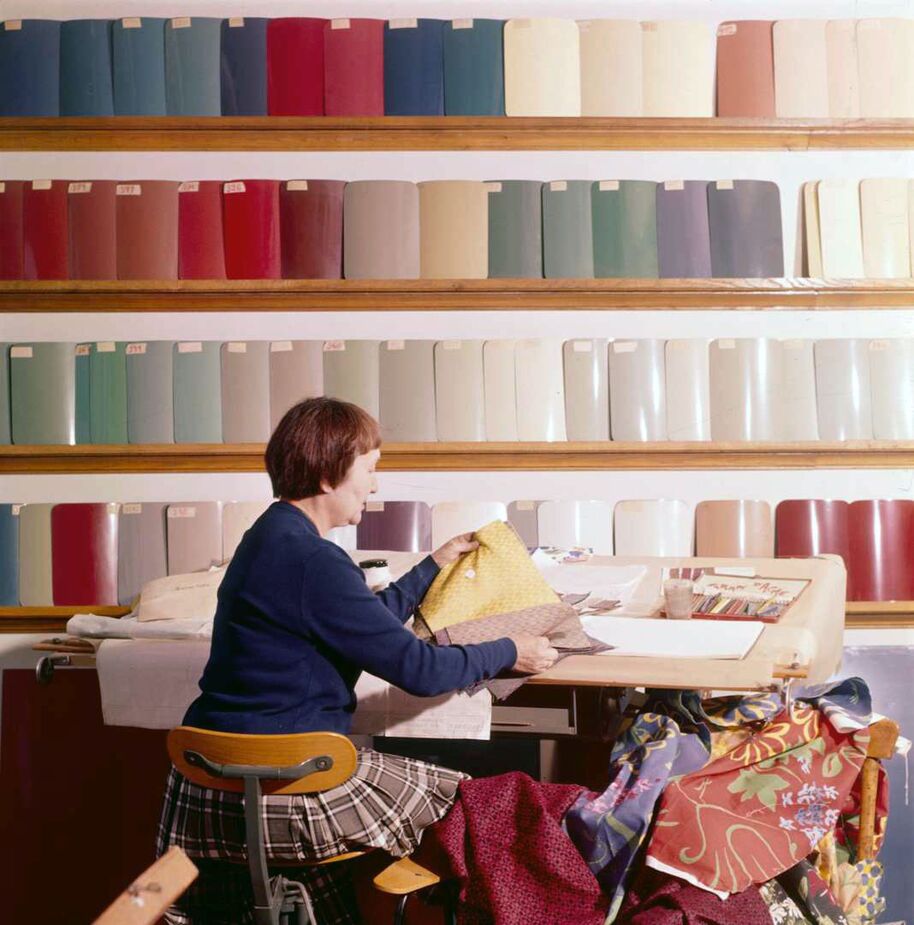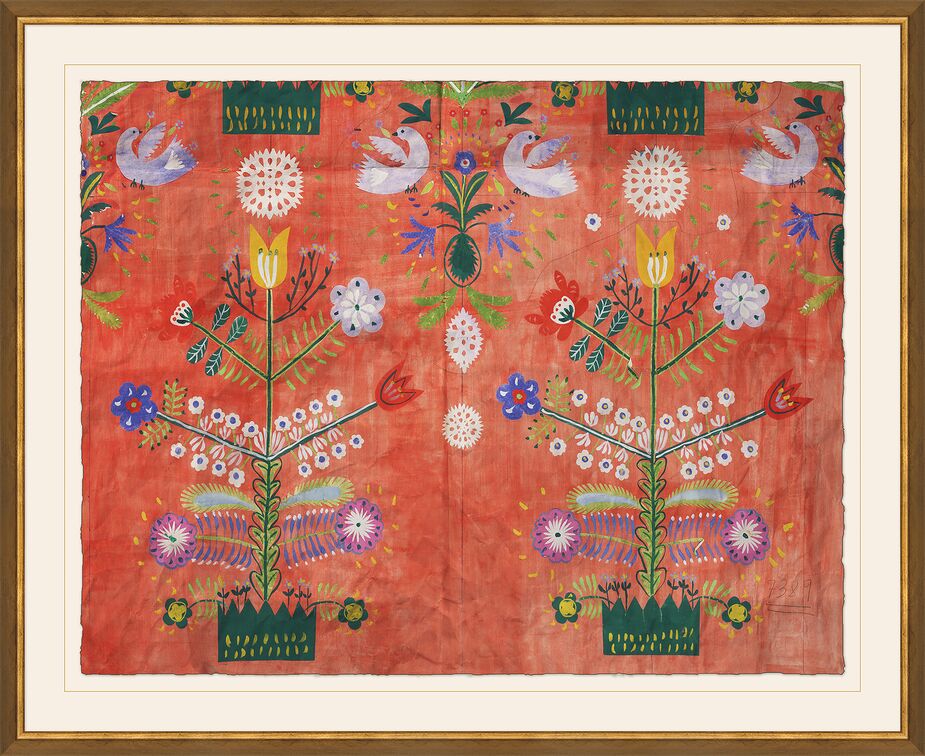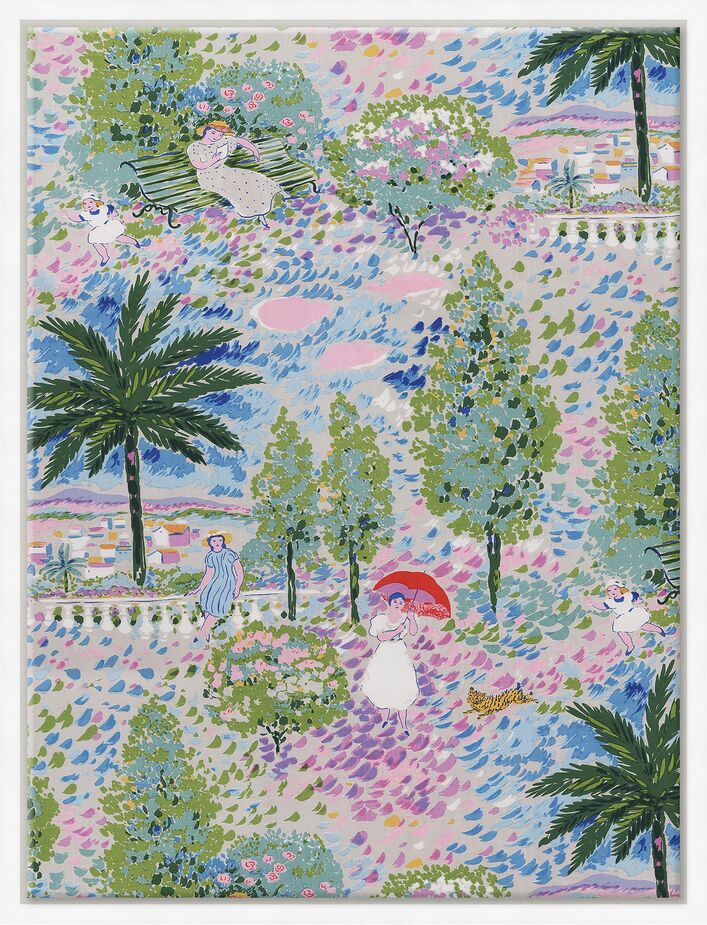Jacqueline Kennedy was a fan. Ditto legendary designer Billy Baldwin, Fauvist painter Raoul Dufy, and couturier Paul Poiret. You’ve no doubt seen her prints on wallpaper, fabrics, or hanging framed in the homes of tastemakers. Yet Paule Marrot (1902-87) remains something of a cult figure.
Born in Bordeaux and raised in Paris, Marrot was interested in art from an early age. Legend has it that one summer while vacationing at her aunt’s house on the Riviera, young Marrot showed her paintings to a neighbor across the road: celebrated Impressionist Auguste-Pierre Renoir. He encouraged her to keep at it, leading her to enroll at the prestigious École Nationale Supérieure des Arts Décoratifs when she was 14.
Marrot subsequently became a teacher while hand-printing original textile designs. She became friends with other artists including Dufy, who introduced her to Poirot. Already known as Le Magnifique, Poirot bought a dress design and fabrics from her. She was just 23 when she won a gold medal at the International Exhibition of Modern Decorative and Industrial Arts, where what would become known as Art Deco was introduced to a global audience.
Marrot’s adroit use of color and fondness for nature themes made her popular in France in the run-up to World War II. These qualities were even more in demand after the war, as an antidote to the years of gray uncertainty and dark destruction.

Above: Green Leaves. Top: Swan in Lake.

Marrot was of course aware of the power of color, going so far as to write to French automaker Renault suggesting it broaden the palette of its offerings. CEO Pierre Lefaucheux enlisted Marrot’s help, and beginning in 1953 she worked with Renault to develop lively exterior colors such as Montijo Red and Bahamas Yellow along with coordinating interior upholstery for its new Dauphine line.
With her work for Renault, Marrot achieved mass as well as class appeal. Yet her brand isn’t as widely recognized as those of William Morris, Laura Ashley, Lilly Pulitzer (most of whose signature fabrics were designed by Susie Zuzek), or Marimekko, among others known for their distinctive prints. Some of that might be due to the apparent simplicity of Marrot’s art—apparent being the key word, as the compositions and use of color are subtly sophisticated. The seeming naiveté of her work and the happiness it evokes might also be reasons. In a time when angst and complexity reign in popular and fine art, serenity and joy can seem old-fashioned.
All of which is fine as far as Marrot’s admirers are concerned. Let her remain a cult favorite. It makes her artistry seem all the more special.

Paule Marrot in the 1950s at Renault headquarters. Photo courtesy of Renault.
A Few More Facts About Paule Marrot
• She was awarded France’s Légion d’honneur in 1952. When presenting it to her, sculptor/designer André Arbus declared, “You paint with your heart the flowers of the fields, love, youth, the seasons, everything that is beautiful.”
• As First Lady, Jacqueline Kennedy designed a room in the White House around Marrot’s Les Tulipes print.
• In 2009, Nike collaborated with Paule Marrot Editions, the licensee of her art, on a limited edition of women’s footwear sporting several of her prints.
• Her 1953-54 exhibit at Paris’s Pavillon de Marsan was titled “La demeure joyeuse.” In English that means “the joyful residence,” and it seems to sum up her legacy perfectly.
Shop Paule Marrot >
Shop all art >
Read about Marrot’s contemporary René Magritte >



Join the Discussion